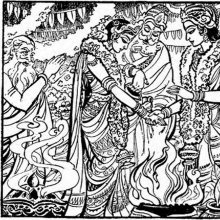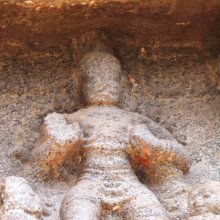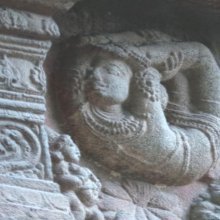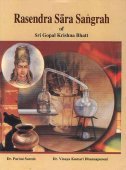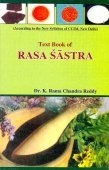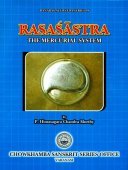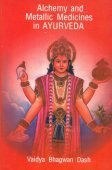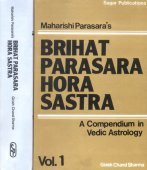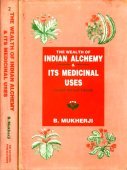Shastra, Śāstra: 40 definitions
Introduction:
Shastra means something in Buddhism, Pali, Hinduism, Sanskrit, Jainism, Prakrit, the history of ancient India, Marathi, Hindi, biology. If you want to know the exact meaning, history, etymology or English translation of this term then check out the descriptions on this page. Add your comment or reference to a book if you want to contribute to this summary article.
The Sanskrit term Śāstra can be transliterated into English as Sastra or Shastra, using the IAST transliteration scheme (?).
Images (photo gallery)
(+37 more images available)
In Hinduism
Purana and Itihasa (epic history)
Source: archive.org: Shiva Purana - English TranslationŚastra (शस्त्र) refers to a “miraculous weapon”, according to the Śivapurāṇa 2.4.3 (“The boyhood sports of Kārttikeya”).—Accordingly, as Brahmā narrated to Nārada: “O celestial sage, in the manner laid down in the Vedas he performed the purificatory rites for the son of Śiva [i.e., Guha/Kārttikeya]. [...] At that time he was known as white in colour. Agni went there and seeing his son who was divine and very holy called him ‘O dear son’. Agni embraced and kissed him too. He gave him a miraculous weapon (śastra), spear. Guha took the spear and ascended the peak. He hit the peak with his spear and the peak fell down. [...]”.
Source: Cologne Digital Sanskrit Dictionaries: The Purana IndexŚāstra (शास्त्र).—Sciences of which Purāṇa is the first; recalled by Brahmā.*
- * Matsya-purāṇa 3. 3; 184. 43; 245. 87; Vāyu-purāṇa 30. 7; 57-12.

The Purana (पुराण, purāṇas) refers to Sanskrit literature preserving ancient India’s vast cultural history, including historical legends, religious ceremonies, various arts and sciences. The eighteen mahapuranas total over 400,000 shlokas (metrical couplets) and date to at least several centuries BCE.
Mīmāṃsā (school of philosophy)
Source: Srimatham: Mīmāṃsa: The Study of Hindu ExegesisŚāstra (शास्त्र) refers to one of the three principle styles found in Sanskrit literature.—Śāstra are the Dharma-śāstras which although in different metres usually the one known as anuṣṭup, they are in the form of narratives in which the subject matter is discussed at great length. To this group also belong the Itihāsas and the Pūrāṇas with their prolix and often tediously long descriptions.
Source: McGill: The architectural theory of the Mānasāra (mimamsa)Śāstra (शास्त्र).—A “comprehensive definition” for śāstra was offered—by Mīmāṃsā, the school of Vedic ritual practice alld textual exegesis. Kumārila Bhaṭta, the great Mīmāṃsāka of the eighth century CE, crystallizes the precedent intuitions and speculations regarding the nature of śāstra in the following definition: “Śāstra is that which teaches people what they should and should not do. It does this by means of eternal words or those made by men. Descriptions of the nature of things/states can b e embrace d by the term śāstra insof ar as they are elements subordinate to injunctions to action” (Ślokavārttika, Śabdapariccheda 4-5).
In the definition quoted above , it is seen that Kumārila does admit a distinction betweenthe descriptive and prescriptive dimensions of śāstra, but almost immediately subverts itso as to nullify any sense of a dialectic between them.
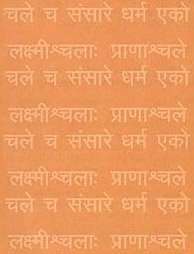
Mimamsa (मीमांसा, mīmāṃsā) refers to one of the six orthodox Hindu schools of philosophy, emphasizing the nature of dharma and the philosophy of language. The literature in this school is also known for its in-depth study of ritual actions and social duties.
Vastushastra (architecture)
Source: Wisdom Library: Vāstu-śāstraŚāstra (शास्त्र, “weapon”) refers to one of the twelve effects of āya (“profit”), according to the Mānasāra. Āya is the first of the āyādiṣaḍvarga, or “six principles” that constitute the “horoscope” of an architectural or iconographic object. Their application is intended to “verify” the measurements of the architectural and iconographic object against the dictates of astrology that lay out the conditions of auspiciousness.
The particular āya (e.g., śāstra) of all architectural and iconographic objects (settlement, building, image) must be calculated and ascertained. This process is based on the principle of the remainder. An arithmetical formula to be used in each case is stipulated, which engages one of the basic dimensions of the object (breadth, length, or perimeter/circumference). The twelve effects of āya may all be assumed as auspicious.
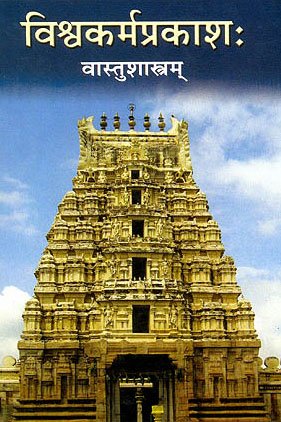
Vastushastra (वास्तुशास्त्र, vāstuśāstra) refers to the ancient Indian science (shastra) of architecture (vastu), dealing with topics such architecture, sculpture, town-building, fort building and various other constructions. Vastu also deals with the philosophy of the architectural relation with the cosmic universe.
Vyakarana (Sanskrit grammar)
Source: Wikisource: A dictionary of Sanskrit grammarŚāstra (शास्त्र).—Scientific treatment of a subject; a system of thoughts giving a scientific treatment of any subject. The word is applied to the rules of Panini and sometimes to an individual rule; cf. शास्त्रबाध (śāstrabādha) or अशास्त्रबाध (aśāstrabādha) or विप्रतिषेधशास्त्र (vipratiṣedhaśāstra),frequently used by the commentators; cf. न हि संदेहादलक्षणं शास्त्रामित्यर्थः (na hi saṃdehādalakṣaṇaṃ śāstrāmityarthaḥ) Nagesa's Par. Sek. on Pari. 1; cf. पदान्तादिष्वेव विकारशास्त्रम् (padāntādiṣveva vikāraśāstram) R.Pr.II.2.

Vyakarana (व्याकरण, vyākaraṇa) refers to Sanskrit grammar and represents one of the six additional sciences (vedanga) to be studied along with the Vedas. Vyakarana concerns itself with the rules of Sanskrit grammar and linguistic analysis in order to establish the correct context of words and sentences.
Jyotisha (astronomy and astrology)
Source: Wisdom Library: Brihat Samhita by Varahamihira1) Śastra (शस्त्र) refers to “swords”, according to the Bṛhatsaṃhitā (chapter 3), an encyclopedic Sanskrit work written by Varāhamihira mainly focusing on the science of ancient Indian astronomy astronomy (Jyotiṣa).—Accordingly, “The Sun when he changes his course from north to south and when in his usual condition will bring on prosperity and increase of crops; but when he undergoes a change either in his usual course or in his usual appearance he causes fear to mankind. Even on other than new-moon days the Ketu named Tvaṣṭā eclipses the solar disc. Then seven princes and their subjects will perish by the sword, by fire and by famine [i.e., śastra-agni-durbhikṣa]”.
2) Śastra (शस्त्र) refers to “soldiers”, according to the Bṛhatsaṃhitā (chapter 5).—Accordingly, “If the sun and moon should begin to be eclipsed when only half risen, deceitful men will suffer as well as sacrificial rites. [...] If the sun and moon should be eclipsed when in the sign of Aries (Meṣa), the Pāñcālas, the Kaliṅgas, the Sūrasenas, the people of Kāmboja, of Odra, of Kirāta, soldiers [i.e., śastra] and persons who live by fire will be afflicted with miseries. If the sun or moon should be eclipsed when in the sign of Taurus (Vṛṣabha), shepherds, cows, their owners and eminent men will suffer miseries”.
3) Śastra (शस्त्र) or Śastraketu refers to a particular type of Ketus (i.e., luminous bodies such as comets and meteors), according to the Bṛhatsaṃhitā (chapter 11).—Accordingly, “Vasā Ketu is a comet which lies with its head towards the north; it is of large size, glossy and appears in the west. When it appears there will be immediate deaths in the land but prosperity in the end. Asthi Ketu resembles the Vasā Ketu; but if it appears of sharp rays, there will be fear in the land. Śastra Ketu also resembles the Vasā Ketu but is glossy and appears in the west; and when it appears, there will be wars and deaths in the land”.
4) Śāstra (शास्त्र) refers to “(one who is) learned”, according to the Bṛhatsaṃhitā (chapter 15) (“On the nakṣatras—‘asterisms’”).—Accordingly, “Those who are born on the lunar day of Uttaraphālguni will be mild, cleanly, modest, heretical, generous and learned (śāstra-rata); will be dealers in grains; will be wealthy, virtuous and in the company of princes. [...]”.
Source: Wikibooks (hi): Sanskrit Technical TermsŚāstra (शास्त्र).—Learned discipline, science. Note: Śāstra is a Sanskrit technical term used in ancient Indian sciences such as Astronomy, Mathematics and Geometry.

Jyotisha (ज्योतिष, jyotiṣa or jyotish) refers to ‘astronomy’ or “Vedic astrology” and represents the fifth of the six Vedangas (additional sciences to be studied along with the Vedas). Jyotisha concerns itself with the study and prediction of the movements of celestial bodies, in order to calculate the auspicious time for rituals and ceremonies.
Dharmashastra (religious law)
Source: Knowledge Traditions & Practices of India: Education: Systems & PracticesŚāstra (शास्त्र) refers to “learned disciplines” and formed part of the ancient Indian education system, which aimed at both the inner and the outer dimension of a person. The Śāstra are classified into apaurūṣeya (disciplines dealing with knowledge not contingent on individuals) and paurūṣeya (disciplines whose knowledge is contingent on the individual).
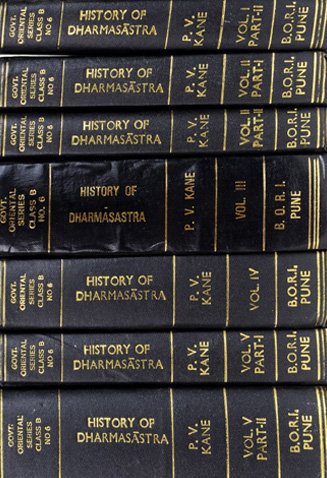
Dharmashastra (धर्मशास्त्र, dharmaśāstra) contains the instructions (shastra) regarding religious conduct of livelihood (dharma), ceremonies, jurisprudence (study of law) and more. It is categorized as smriti, an important and authoritative selection of books dealing with the Hindu lifestyle.
Ayurveda (science of life)
Source: archive.org: Vagbhata’s Ashtanga Hridaya Samhita (first 5 chapters)Śastra (शस्त्र) refers to “scalpel” (i.e., surgery), as mentioned in verse 5.37-39 of the Aṣṭāṅgahṛdayasaṃhitā (Sūtrasthāna) by Vāgbhaṭa.—Accordingly, “[...] [ghee is] recommended for [...] (and) those exhausted from pulmonary rupture, pulmonary consumption, erysipelas, scalpel [viz., śastra-glapita], and fire ; dispersive of wind, choler, poison, frenzy, desiccation, unbeautifulness, and fever, [...]: ghee [viz., ghṛta] (is) possessed of a thousand powers (and), by its (many) ways of application, productive of a thousand effects”.
Source: Ancient Science of Life: The Translational Framework of Ayurveda as a Knowledge SystemŚāstra (शास्त्र) refers to “theoretical constructs”.— It appears that the Āyurveda knowledge system is itself structured as a translational model—with tattva (principles) translating to śāstra (theoretical constructs) and śāstra translating to vyavahāra (practical applications). Thus the whole system is designed to translate knowledge into action that is of benefit to society—“lokānugrahapravṛttaḥ śāstravādaḥ”. In other words, the purpose of the śāstra, especially in the context of medicine, is to improve quality of human life, and not to be confined within the limits of academic explorations. The three tier structure of the knowledge system of Āyurveda is aimed to ensure that academic insights get translated into practical applications.
Source: gurumukhi.ru: Ayurveda glossary of termsŚāstra (शास्त्र):—A branch of Knowledge; see Tantra

Āyurveda (आयुर्वेद, ayurveda) is a branch of Indian science dealing with medicine, herbalism, taxology, anatomy, surgery, alchemy and related topics. Traditional practice of Āyurveda in ancient India dates back to at least the first millenium BC. Literature is commonly written in Sanskrit using various poetic metres.
Vaishnavism (Vaishava dharma)
Source: Pure Bhakti: Bhagavad-gita (4th edition)Śāstra (शास्त्र) refers to “vedic scripture; derived from the Sanskrit verbal root śās (to govern, command)”. (cf. Glossary page from Śrīmad-Bhagavad-Gītā).
Source: Pure Bhakti: Bhajana-rahasya - 2nd EditionŚāstra (शास्त्र) refers to:—Scripture, especially the Vedic scriptures. (cf. Glossary page from Bhajana-Rahasya).
Source: Pure Bhakti: Arcana-dipika - 3rd EditionŚāstra (शास्त्र) refers to:—Scripture. śayana–rest. sevā-aparādha–offences to the deity. siddhānta–philosophical conclusions. (cf. Glossary page from Arcana-dīpikā).

Vaishnava (वैष्णव, vaiṣṇava) or vaishnavism (vaiṣṇavism) represents a tradition of Hinduism worshipping Vishnu as the supreme Lord. Similar to the Shaktism and Shaivism traditions, Vaishnavism also developed as an individual movement, famous for its exposition of the dashavatara (‘ten avatars of Vishnu’).
Shaivism (Shaiva philosophy)
Source: Brill: Śaivism and the Tantric TraditionsŚāstra (शास्त्र) refers to the “scriptures”, according to the 9th-century Sarvajñānottaratantra chapter 18.—Accordingly, “Next, I shall teach the best observance among observances, which is known as the Śiva-vrata and which is revered by Asuras and Gods alike. [...] Next, I shall teach the characteristics of a temple of Śiva, as well as [how to perform] the installation of the liṅga, in which the universe is [itself] ‘installed’. All the gods, beginning with Brahmā, reside in the Liṅga; therefore a Yogin who venerates his guru, God and the fire and who has performed his vidyāvrata should install the liṅga, following the procedure taught in scripture (śāstra-dṛṣṭa—śāstradṛṣṭena karmaṇā). [...]”.

Shaiva (शैव, śaiva) or Shaivism (śaivism) represents a tradition of Hinduism worshiping Shiva as the supreme being. Closely related to Shaktism, Shaiva literature includes a range of scriptures, including Tantras, while the root of this tradition may be traced back to the ancient Vedas.
Shaktism (Shakta philosophy)
Source: Brill: Śaivism and the Tantric Traditions (shaktism)Śastra (शस्त्र) refers to a “sword”, according to the King Vatsarāja’s Pūjāstuti called the Kāmasiddhistuti (also Vāmakeśvarīstuti), guiding one through the worship of the Goddess Nityā.—Accordingly, “[...] May the three-eyed goddess Bhagamālinī give the glory of good fortune. She possesses abundant miraculous power and is as lovely as the moon. She is stationed in the left corner [of the central triangle] and holds in the row of her arms a snare, a goad, a sugarcane, ropes, a book, and a sword (śastra-hastā). [...]”.

Shakta (शाक्त, śākta) or Shaktism (śāktism) represents a tradition of Hinduism where the Goddess (Devi) is revered and worshipped. Shakta literature includes a range of scriptures, including various Agamas and Tantras, although its roots may be traced back to the Vedas.
Pancaratra (worship of Nārāyaṇa)
Source: University of Vienna: Sudarśana's Worship at the Royal Court According to the AhirbudhnyasaṃhitāŚāstra (शास्त्र) refers to the “systematized bodies of knowledge”, according to the Ahirbudhnyasaṃhitā, belonging to the Pāñcarātra tradition which deals with theology, rituals, iconography, narrative mythology and others.—Accordingly, “[...] Out of [his own] head indeed has God, the Lord, created the King in ancient times. Therefore does he have his head anointed and stands above all beings. The King is praised in Revealed Knowledge and Systematized Bodies of Knowledge (śāstra—vedaśāstreṣu) as a double Brāhmaṇa (i.e. as worth twice as much as a Brāhmaṇa). If one is hostile to him out of delusion, that fool is hostile to Hari [himself]”.
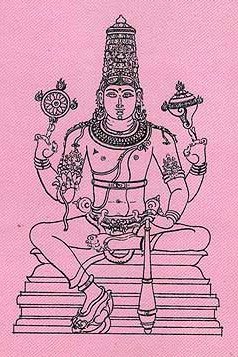
Pancaratra (पाञ्चरात्र, pāñcarātra) represents a tradition of Hinduism where Narayana is revered and worshipped. Closeley related to Vaishnavism, the Pancaratra literature includes various Agamas and tantras incorporating many Vaishnava philosophies.
Ganitashastra (Mathematics and Algebra)
Source: archive.org: Hindu Mathematics1) Śastra (शस्त्र) represents the number 5 (five) in the “word-numeral system” (bhūtasaṃkhyā), which was used in Sanskrit texts dealing with astronomy, mathematics, metrics, as well as in the dates of inscriptions and manuscripts in ancient Indian literature.—A system of expressing numbers by means of words arranged as in the place-value notation was developed and perfected in India in the early centuries of the Christian era. In this system the numerals [e.g., 5—śastra] are expressed by names of things, beings or concepts, which, naturally or in accordance with the teaching of the Śāstras, connote numbers.
2) Śāstra (शास्त्र) represents the number 6 (six) in the “word-numeral system” (bhūtasaṃkhyā).
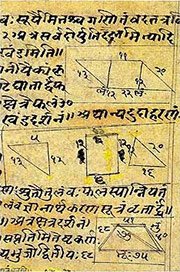
Ganitashastra (शिल्पशास्त्र, gaṇitaśāstra) refers to the ancient Indian science of mathematics, algebra, number theory, arithmetic, etc. Closely allied with astronomy, both were commonly taught and studied in universities, even since the 1st millennium BCE. Ganita-shastra also includes ritualistic math-books such as the Shulba-sutras.
Sports, Arts and Entertainment (wordly enjoyments)
Source: archive.org: Syainika Sastra of Rudradeva with English Translation (art)Śāstra (शास्त्र) refers to a particular “science” (e.g., the science of love), according to the Śyainika-śāstra: a Sanskrit treatise dealing with the divisions and benefits of Hunting and Hawking, written by Rājā Rudradeva (or Candradeva) in possibly the 13th century.—Accordingly, “Is not love experienced by those who are ignorant of, the science of Erotics? Still the sages have written on the science (śāstra) for its thorough realization. In the same manner, though the delights of hunting are well known even to men of no intelligence, still hunting affords peculiar delight to the mind of one who knows the science of hawking. [...]”.
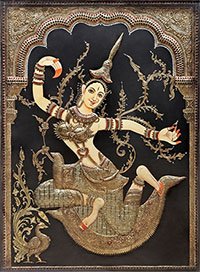
This section covers the skills and profiencies of the Kalas (“performing arts”) and Shastras (“sciences”) involving ancient Indian traditions of sports, games, arts, entertainment, love-making and other means of wordly enjoyments. Traditionally these topics were dealt with in Sanskrit treatises explaing the philosophy and the justification of enjoying the pleasures of the senses.
General definition (in Hinduism)
Source: WikiPedia: HinduismŚāstra is Sanskrit for rules in a general sense. The word is generally used as a suffix in the context of technical or specialized knowledge in a defined area of practice; e.g.
- Bhautika Shastra (physics),
- Rasayana Shastra (chemistry),
- Jeeva Shastra (biology),
- Vastu Shastra (architectural science),
- Shilpa Shastra (science of sculpture),
- Artha Shastra (economics),
- and Neeti Shastra (political science).
In Buddhism, a shastra is often a commentary written at a later date to explain an earlier scripture or sutra.
In Hinduism sutra denotes a distinct type of literary composition, based on short aphoristic statements, generally using various technical terms.
A bearer of Shastra or the holder of this sacred knowledge is called Shashtradhari (Sanskrit: शास्त्रधारी, śāstradhārī).
Source: McGill: The architectural theory of the Mānasāra (hinduism)Śāstra (शास्त्र).—A linguistic analysis of the term śāstra itselî reveals just as much. The term derives from √śās, meaning “to teach,instruct, chastise, punish, correct,” and also “to order, command, role, govern.” Its syntactic derivation, in the Pāṇinian grammatical system, is explained as the addition of the suffix ‘tra’ to the verbal root, indicated by the kṛtpratyaya, “primary affix” (or “formative element”), ‘ṣṭran.’ The primary meaning of this suffix is instrumentality, that is, “the means by which an action is performed or carried to completion” (Richard Hayes, Continuing Sanskrit: Saṃskṛtabhāṣāpravartanam, Chapter 4, “Kṛt-pratyaya-niruktiḥ: Deriving nouns and adjectives from verbal roots,” p. 63).
The lexicographer V. S. Apte gives the semantic derivation of the neuter noun śāstram, from the verbal raot √śās as śiṣyate ’nena, which means “[that which is] taught without blemish” (Apte, A Practical Sanskrit-English Dictionary, p. 1549).
In Buddhism
Mahayana (major branch of Buddhism)
Source: Wisdom Library: Maha Prajnaparamita SastraŚastra (शस्त्र, “knives”) refers to one of the various “outer torments”, according to Mahāprajñāpāramitāśāstra (chapter XV).—Accordingly, “There are two kinds of torments (alpābādatā), those having an external cause and those having an internal cause. The external torments are cold (śīta), heat (uṣṇa), hunger (kṣudh), thirst (pipāsā), armies (caturaṅgabala), swords (asi), knives (śastra), clubs (daṇḍa), catastrophes (patana), ruins (avamardana); all these external accidents of this kind are called torments (ādādha). The inner torments are the 404 illnesses (vyādhi) that come from improper food or irregular sleep; all the sicknesses of this kind are called inner sicknesses. Corporeal beings (dehin) all have to suffer from these two kinds of illnesses. This is why Ratnakāra asks Śākyamuni if he has but little torments and suffering”.
Source: academia.edu: A Study and Translation of the GaganagañjaparipṛcchāŚastra (शस्त्र) refers to the “sword (of knowledge)”, according to the Gaganagañjaparipṛcchā: the eighth chapter of the Mahāsaṃnipāta (a collection of Mahāyāna Buddhist Sūtras).—Accordingly, “When this had been said, the Lord said to the Bodhisattva, the great being Gaganagañja: ‘Excellent! Excellent, son of good family! Son of good family, you have done well to ask the Tathāgata. [...] You have been clad in the armour of great friendliness and great compassion, have honored the immeasurable Buddhas, have been never satisfied to seek the dharma (dharmaparyeṣṭi), have transcended all aspects of conceit by means of the sword of knowledge (jñāna-śastra), have constantly strived for the benefit of living beings, [...]’”,

Mahayana (महायान, mahāyāna) is a major branch of Buddhism focusing on the path of a Bodhisattva (spiritual aspirants/ enlightened beings). Extant literature is vast and primarely composed in the Sanskrit language. There are many sūtras of which some of the earliest are the various Prajñāpāramitā sūtras.
Buddhist philosophy
Source: Wisdom Experience: Mind (An excerpt from Science and Philosophy)Śāstra (शास्त्र) refers to “treatises” (i.e., ‘contemplative manuals’).—The great Buddhist authors of India also wrote treatises (śāstra) that sometimes defy easy categorization, but many of these can fit under the general rubric of “contemplative manuals,” in that even when straying into abstruse philosophy, they remain centrally concerned with providing instructions, theories, or explanations for effective contemplative practice.
-
In Jainism
General definition (in Jainism)
Source: ORA: Amanaska (king of all yogas): (Jainism)Śāstra (शास्त्र) refers to “scriptures”, according to the 12th century Yogaśāstra (verse 12.55) by Hemacandra: a Jain treatise dealing with Yoga and the highest reality (tattva).—Accordingly, “[This] Upaniṣad of Yoga, which is a cause of wonder in the mind of the assembly of the wise, was known from scripture (śāstra), from the mouth of a good Guru and a little from experience in various places. Because of the profuse requesting of the Caulukya king, Kumārapāla, it was placed in the realm of words by his teacher, the honourable Hemacandra. [...]”.

Jainism is an Indian religion of Dharma whose doctrine revolves around harmlessness (ahimsa) towards every living being. The two major branches (Digambara and Svetambara) of Jainism stimulate self-control (or, shramana, ‘self-reliance’) and spiritual development through a path of peace for the soul to progess to the ultimate goal.
India history and geography
Source: Cologne Digital Sanskrit Dictionaries: Indian Epigraphical GlossaryŚāstra.—(IE 7-1-2), ‘six’. Note: śāstra is defined in the “Indian epigraphical glossary” as it can be found on ancient inscriptions commonly written in Sanskrit, Prakrit or Dravidian languages.

The history of India traces the identification of countries, villages, towns and other regions of India, as well as mythology, zoology, royal dynasties, rulers, tribes, local festivities and traditions and regional languages. Ancient India enjoyed religious freedom and encourages the path of Dharma, a concept common to Buddhism, Hinduism, and Jainism.
Biology (plants and animals)
Source: Google Books: CRC World Dictionary (Regional names)Sastra in India is the name of a plant defined with Saccharum officinarum in various botanical sources. This page contains potential references in Ayurveda, modern medicine, and other folk traditions or local practices It has the synonym Saccharum officinarum var. luteum-durum Hassk. (among others).
Example references for further research on medicinal uses or toxicity (see latin names for full list):
· Species Plantarum (1753)
· Annalen des Wiener Museums der Naturgeschichte (1836)
· Grasses of Burma (1960)
· Report of the Harvard Botanical Gardens, Soledad Estate, Cienfuegos, Cuba (1927)
· Flore des Antilles (1808)
· Feddes Repertorium (1992)
If you are looking for specific details regarding Sastra, for example diet and recipes, pregnancy safety, health benefits, extract dosage, chemical composition, side effects, have a look at these references.

This sections includes definitions from the five kingdoms of living things: Animals, Plants, Fungi, Protists and Monera. It will include both the official binomial nomenclature (scientific names usually in Latin) as well as regional spellings and variants.
Languages of India and abroad
Marathi-English dictionary
Source: DDSA: The Molesworth Marathi and English Dictionaryśastra (शस्त्र).—n (S) A weapon. 2 A weapon figuratively, that in which one's prevalence or power consists;--as learning, beauty, sanctity, the pen &c. Applied also to any thing considered as the masterer, match, vanquisher, antidote &c., of any other thing. śa0 tuḷaṇēṃ or tōlaṇēṃ To point or set or hold in position one's weapon: also to wave or brandish it. śa0 dharaṇēṃ with vara of o. To take up arms against.
--- OR ---
śāstra (शास्त्र).—n (S) Institutes of religion, law, or letters; esp. as considered as of divine origin or authority; scripture. Ex. of comp. śāstramaryādā, śāstra- rīti, śāstramārga, śāstrapratipādita, śāstrābhyāsa, śāstrajña, śāstrajñāna, śāstratatva. Used singly it implies works of religion, literature, or science in general, or treatises upon the arts: it is therefore customarily connected with some other word to limit its application; as vēdāntaśāstra, dharmaśāstra, kāvyaśāstra, śilpaśāstra, kāmaśāstra, nyāyaśāstra, vyākaraṇaśāstra &c., the or a treatise or system of philosophical theology; the or a book of laws; a work on poetry; a work on the mechanical arts &c. 2 A treatise, disquisition, or book in general. śāstrāsa asaṇēṃ or śāstrācā or śāstra tā (asaṇēṃ- nasaṇēṃ &c.) To be enough indeed for the supplying, serving, or fulfilling of any matter or point required by the Shastra but without excess beyond; to exist in just sufficient quantity, or to be performed with just sufficient definiteness of action, as to warrant the name or designation borne, and to preclude disallowal of its existence or its performance; to be enough to swear by. Used of articles, substances, and actions. Ex. hā āpalā ugīca śāstrāsa cākū āhē hyānēṃ bōṭa dēkhīla kāpaṇāra nāhīṃ; āja gharānta śāstrāsa sākhara nāhīṃ maga śērabhara dēūṃ kuṭhalī; śāstrāsa snāna jhālēṃ kharēṃ malaśuddhi tī nirāḷī.
Source: DDSA: The Aryabhusan school dictionary, Marathi-Englishśastra (शस्त्र).—n A weapon. śastradharaṇēṃ Take up arms against.
--- OR ---
śāstra (शास्त्र).—n Institutes of religion, law, or letters. Science in general. A treatise. śāstrāsa asaṇēṃ or śāstrācā or śāstrāpuratāṃ (asaṇēṃ nasaṇēṃ &c.) To exist in just sufficient quantity or to be performed with just sufficient definiteness of action, as to warrant the name or designation borne, and to preclude disallowal of its existence or its performance. Ex. hā āpalā ugīca śāstrāsa cāku āhē, hyānēṃ bōṭa dēkhila kāpaṇāra nāhīṃ.
Marathi is an Indo-European language having over 70 million native speakers people in (predominantly) Maharashtra India. Marathi, like many other Indo-Aryan languages, evolved from early forms of Prakrit, which itself is a subset of Sanskrit, one of the most ancient languages of the world.
Sanskrit dictionary
Source: DDSA: The practical Sanskrit-English dictionaryŚastra (शस्त्र).—[śas-ṣṭran]
1) A weapon, arms; क्षमाशस्त्रं करे यस्य दुर्जनः किं करिष्यति (kṣamāśastraṃ kare yasya durjanaḥ kiṃ kariṣyati) Subhāṣ; R.2.4;3.51,52;5.28.
2) An instrument, a tool in general.
3) Iron; गृहीतशस्त्राः क्रोशन्ति चर्मिणो वाजिपृष्ठगाः (gṛhītaśastrāḥ krośanti carmiṇo vājipṛṣṭhagāḥ) Mahābhārata (Bombay) 6.2.29.
4) Steel.
5) A hymn of praise (stotra).
6) Repetition, recitation.
Derivable forms: śastram (शस्त्रम्).
--- OR ---
Śāstra (शास्त्र).—[śiṣyate'nena śās-ṣṭran]
1) An order, a command, rule, precept; अतिक्रामति यः शास्त्रं पितुर्धर्मार्थदर्शिनः (atikrāmati yaḥ śāstraṃ piturdharmārthadarśinaḥ) Mahābhārata (Bombay) 5.148. 21.
2) A sacred precept or rule, scriptural injunction; तस्माच्छास्त्रं प्रमाणं ते कार्याकार्यव्यवस्थितौ (tasmācchāstraṃ pramāṇaṃ te kāryākāryavyavasthitau) Bhagavadgītā (Bombay) 16.24.
3) A religious or sacred treatise, sacred book, scripture; see comps. below.
4) Any department of knowledege, science; इति गुह्यतमं शास्त्रम् (iti guhyatamaṃ śāstram) Bhagavadgītā (Bombay) 15.2; शास्त्रेष्वकुण्ठिता बुद्धिः (śāstreṣvakuṇṭhitā buddhiḥ) R.1.19; often at the end of comp. after the word denoting the subject, or applied collectively to the whole body of teaching on that subject; वेदान्तशास्त्र, न्यायशास्त्र, तर्कशास्त्र, अलंकार- शास्त्र (vedāntaśāstra, nyāyaśāstra, tarkaśāstra, alaṃkāra- śāstra) &c.
5) What is learnt, knowledge; Śiśupālavadha 5.47.
6) A work, treatise; तन्त्रैः पञ्चभिरेतच्चकार सुमनोहरं शास्त्रकम् (tantraiḥ pañcabhiretaccakāra sumanoharaṃ śāstrakam) Pañcatantra (Bombay) 1.
7) Theory (opp. prayoga or practice); इमं मां च शास्त्रे प्रयोगे च विमृशतु (imaṃ māṃ ca śāstre prayoge ca vimṛśatu) M.1.
8) The material and spiritual science together; तत्त्वाभेदेन यच्छास्त्रं तत्कार्यं नान्यथाविधम् (tattvābhedena yacchāstraṃ tatkāryaṃ nānyathāvidham) Mahābhārata (Bombay) 12.267.9.
Derivable forms: śāstram (शास्त्रम्).
Source: Cologne Digital Sanskrit Dictionaries: Shabda-Sagara Sanskrit-English DictionaryŚastra (शस्त्र).—n.
(-straṃ) 1. A weapon in general. 2. Iron. 3. Steel. 4. An instrument. 5. A hymn of praise. m.
(-straḥ) A sword, a scymitar. f. (-strī) A knife. E. śas to hurt, aff. ṣṭran .
--- OR ---
Śāstra (शास्त्र).—n.
(-straṃ) 1. An order or command. 2. Scripture, science, institutes of religion, law or letters, especially considered as of divine origin or authority: when used singly, it implies works of literature or science in general, and it is therefore customarily connected with some other word to limit its application, as the Vedanta Shastras, or treatises of philosophical theology; the Dharma-Shastras, books of law, &c.; it is also applied to less important branches of knowledge, as the Kavya-Shastras, or poetical works; Shilpa- Shastras, works on the mechanical arts; and Kama-Shastras, or erotic compositions; in the singular number it is also used comprehensively to signify the body of all that has been written on the subject, as Dharma-Shastras, the institutes or code of law; Kavya-Shastra, poetry; Alankara-Shastra, rhetoric, &c. 3. A book in general. E. śās to govern or teach, aff. ṣṭran .
Source: Cologne Digital Sanskrit Dictionaries: Benfey Sanskrit-English DictionaryŚastra (शस्त्र).—[śas + tra], I. n. A sword, a scimitar, [Pañcatantra] 34, 15;
--- OR ---
Śāstra (शास्त्र).—[śās + tra], n. 1. An order. 2. A precept, [Pañcatantra] 141, 13. 3. Scripture, institutes of religion, law, science, learning in general, [Hitopadeśa] pr. [distich] 10, M. M.; [Bhartṛhari, (ed. Bohlen.)] 2, 12;
Śastra (शस्त्र).—1. [neuter] a kind of recitation ([ritual or religion]).
--- OR ---
Śastra (शस्त्र).—2. [neuter] knife, dagger (also [feminine] śastrī & śastrikā); sword, weapon i.[grammar]
--- OR ---
Śāstra (शास्त्र).—[neuter] instruction, precept, rule, theory, a scientific or canonical work.
Source: Cologne Digital Sanskrit Dictionaries: Monier-Williams Sanskrit-English Dictionary1) Śastra (शस्त्र):—[from śaṃs] 1. śastra n. (for 2. See under √śas) invocation, praise (applied to any hymn recited either audibly or inaudibly, as opp. to stoma, which is sung, but [especially] the verses recited by the Hotṛ and his assistant as an accompaniment to the Grahas at the Soma libation), [Vājasaneyi-saṃhitā; Brāhmaṇa; ???; Chāndogya-upaniṣad]
2) [v.s. ...] reciting, recitation, [Śāṅkhāyana-brāhmaṇa]
3) [from śas] 2. śastra m. (for 1. See p. 1044, col. 1) a sword, [cf. Lexicographers, esp. such as amarasiṃha, halāyudha, hemacandra, etc.]
4) [from śas] n. an instrument for cutting or wounding, knife, sword, dagger, any weapon (even applied to an arrow, [Bhaṭṭi-kāvya]; weapons are said to be of four kinds, pāṇi-mukta, yantra-mukta, muktāmukta, and amukta), [Śatapatha-brāhmaṇa] etc. etc.
5) [v.s. ...] any instrument or tool (See [compound])
6) [v.s. ...] iron, steel, [cf. Lexicographers, esp. such as amarasiṃha, halāyudha, hemacandra, etc.]
7) [v.s. ...] a razor, [cf. Lexicographers, esp. such as amarasiṃha, halāyudha, hemacandra, etc.]
8) Śāstra (शास्त्र):—[from śās] n. an order, command, precept, rule, [Ṛg-veda; Kāvya literature; Purāṇa]
9) [v.s. ...] teaching, instruction, direction, advice, good counsel, [Mahābhārata; Kāvya literature] etc.
10) [v.s. ...] any instrument of teaching, any manual or compendium of rules, any bock or treatise, ([especially]) any religious or scientific treatise, any sacred book or composition of divine authority (applicable even to the Veda, and said to be of fourteen or even eighteen kinds [see under vidyā]; the word śāstra is often found ifc. after the word denoting the subject of the book, or is applied collectively to whole departments of knowledge e.g. vedānta-ś, a work on the Vedānta philosophy or the whole body of teaching on that subject; dharma-ś, a law-book or whole body of written laws; kāvya-ś, a poetical work or poetry in general; śilpi-ś, works on the mechanical arts; kāma-ś, erotic compositions; alaṃkāra ś, rhetoric, etc.), [Nirukta, by Yāska; Prātiśākhya; Manu-smṛti; Mahābhārata] etc.
11) [v.s. ...] a body of teaching (in general), scripture, science, [Kāvya literature; Purāṇa]
Source: Cologne Digital Sanskrit Dictionaries: Yates Sanskrit-English Dictionary1) Śastra (शस्त्र):—(straṃ) 1. n. A weapon in general; iron, steel. m. A sword. f.
(-ī) A knife.
2) Śāstra (शास्त्र):—(straṃ) 1. n. An order or command; sacred book; any work or book.
Source: DDSA: Paia-sadda-mahannavo; a comprehensive Prakrit Hindi dictionary (S)Śastra (शस्त्र) in the Sanskrit language is related to the Prakrit words: Satya, Sattha.
[Sanskrit to German]
Sanskrit, also spelled संस्कृतम् (saṃskṛtam), is an ancient language of India commonly seen as the grandmother of the Indo-European language family (even English!). Closely allied with Prakrit and Pali, Sanskrit is more exhaustive in both grammar and terms and has the most extensive collection of literature in the world, greatly surpassing its sister-languages Greek and Latin.
Hindi dictionary
Source: DDSA: A practical Hindi-English dictionary1) Śastra (शस्त्र):—(nm) an arm, weapon; instrument, tool; ~[kāra] an armourer; ~[jīvī] a professional soldier, serviceman; -[tyāga] renouncing (the use of) arms, abandonment of the arms; ~[dhārī] a warrior; armed; -[prahāra] blow of a weapon; -[vidyā] the science of arms, military science; ~[śālā] armoury, arsenal; ~[sajjita] equipped with arms; armed; -[samarpaṇa] surrender of arms; —[ḍāla denā] to surrender arms.
2) Śāstra (शास्त्र):—(nm) scripture(s), a religious or scientific treatise, a composition of divine or secular authority; science; a discipline; literature of knowledge; ~[kāra] the author of a shastra; -[carcā] study and discussion on shastras; -[ciṃtaka] a learned man, one who reflects and deliberates on shastras; ~[jña] one who is well-versed in shastras; -[jñāna] knowledge of a shastra or the shastras; ~[darśī] see ~[jña; -dṛṣṭi] scriptural point of view; viewpoint peculiar to a discipline; -[pravaktā] a spokesman of the scriptures (shastras) or a discipline; ~[varjita] forbidden by the scriptures ([śāstra]); -[vidhāna] a precept or prescription of the scriptures (shastras); -[vidhi] permission of the scriptures ([śāstra]); ~[vimukha] profane, opposed to or negligent of the scriptures ([śāstra]); ~[viruddha] opposed to the scriptures; profane, heretic; ~[vihita] approved of or ordained by the scriptures, provided for in the scriptures (shastras); ~[saṃgata/sammata] see ~[vihita; ~siddha] proved by the scriptures, in accordance with the scriptures ([śāstra]).
...
Kannada-English dictionary
Source: Alar: Kannada-English corpusŚastra (ಶಸ್ತ್ರ):—
1) [noun] any instrument or weapon.
2) [noun] iron.
3) [noun] steel.
--- OR ---
Śāstra (ಶಾಸ್ತ್ರ):—
1) [noun] an order, command, precept, rule.
2) [noun] any manual or compendium of rules on religion, science, etc.
3) [noun] customary religious or social observance.
4) [noun] any of the branches of knowledge or study, whick is concerned with establishing and systematising facts, principles, and methods, as by experiments and hypotheses; science.
5) [noun] systematised knowledge derived from observation, study, and experimentation carried on in order to determine the nature or principles of what is being studied; science.
6) [noun] (fig.) a pretentious act or observance; hypocrisy.
7) [noun] ಶಾಸ್ತ್ರ ಹೇಳಲಿಕ್ಕೆ, ಬದನೆಕಾಯಿ ತಿನ್ನಲಿಕ್ಕೆ [shastra helalikke, badanekayi tinnalikke] śastra hēḷalikke, badanekāyi tinnalikke (prov.) talk like philosophers, live like fools; to be a hypocritic preacher, reformer; ಶಾಸ್ತ್ರಕೇಳು [shastrakelu] śastra kēḷu to consult an astrologer about one’s future; ಶಾಸ್ತ್ರಮಾಡು [shastramadu] śastra māḍu to observe the religious formalities; 2. (fig.) to do, observe, perform for the sake of it, without having interest or sincerity; ಶಾಸ್ತ್ರಮುಟ್ಟು [shastramuttu] śastra muṭṭu to hold a scripture while making a statement, giving witness or taking an oath; ಶಾಸ್ತ್ರಹೇಳು [shastrahelu] śastra hēḷu to tell, announce or indicate beforehand; to prophesy; to predict; to foretell.
Kannada is a Dravidian language (as opposed to the Indo-European language family) mainly spoken in the southwestern region of India.
See also (Relevant definitions)
Starts with (+253): Shaastrakaar, Shastra mara, Shastra-asva, Shastrabala, Shastrabandha, Shastrabhaya, Shastrabhijna, Shastrabhrit, Shastrabhyas, Shastrabhyasa, Shastrabhyasi, Shastrabuddhi, Shastracakshus, Shastracarana, Shastracarca, Shastracaura, Shastrachakshus, Shastracharana, Shastrachikitsa, Shastracikitsa.
Ends with (+475): Abhinayashastra, Abhivardhanashastra, Acara-shastra, Acarashastra, Acchavakashastra, Achavakashastra, Adhikaranashastra, Adhyatmashastra, Adishastra, Agamashastra, Aharashastra, Ajnashastra, Ajnatavastushastra, Ajyashastra, Akarbanika-rasayanashastra, Akhyanashastra, Akritiracanashastra, Akulagamayogashastra, Akutashastra, Alamkarashastra.
Full-text (+6192): Shastri, Shastrakara, Yathashastra, Shastrakrit, Shastravat, Shastrin, Dharmashastra, Shastrabhijna, Shastram, Shastrajivin, Shastrajna, Shastrasamhati, Upattashastra, Shastrashastra, Tarkashastra, Rajanitishastra, Bhautika-shastra, Shastramarja, Agama, Shastratas.
Relevant text
Search found 254 books and stories containing Shastra, Śāstra, Sastra, Śastra, Shaastra; (plurals include: Shastras, Śāstras, Sastras, Śastras, Shaastras). You can also click to the full overview containing English textual excerpts. Below are direct links for the most relevant articles:
Chaitanya Bhagavata (by Bhumipati Dāsa)
Verse 2.1.195 < [Chapter 1 - The Beginning of the Lord’s Manifestation and His Instructions on Kṛṣṇa-saṅkīrtana]
Verse 2.23.97 < [Chapter 23 - Wandering about Navadvīpa On the Day the Lord Delivered the Kazi]
Verse 1.11.42 < [Chapter 11 - Meeting with Śrī Īśvara Purī]
The Agnistoma Somayaga in the Shukla Yajurveda (by Madan Haloi)
Somasaṃsthā (4): Ṣoḍaśī < [Chapter 3 - The Somayāga]
Part 1.2: The common peculiarities of the Saṃsthās < [Chapter 3 - The Somayāga]
Somasaṃsthā (3): Ukthya < [Chapter 3 - The Somayāga]
Satapatha-brahmana (by Julius Eggeling)
Kāṇḍa IV, adhyāya 3, brāhmaṇa 2 < [Fourth Kāṇḍa]
Kāṇḍa XIII, adhyāya 5, brāhmaṇa 1 < [Thirteenth Kāṇḍa]
Kanda IV, adhyaya 5, brahmana 3 < [Fourth Kanda]
Rig Veda (translation and commentary) (by H. H. Wilson)
Nitiprakasika (Critical Analysis) (by S. Anusha)
War Weapons (1): Śāstras (Introduction) < [Chapter 3]
Sarga II: Dhanurveda-viveka-kathana (64 Verses) < [Chapter 2]
War Weapons (2): Astras (Introduction) < [Chapter 3]
Vastu-shastra (4): Palace Architecture (by D. N. Shukla)
Related products
(+15 more products available)
